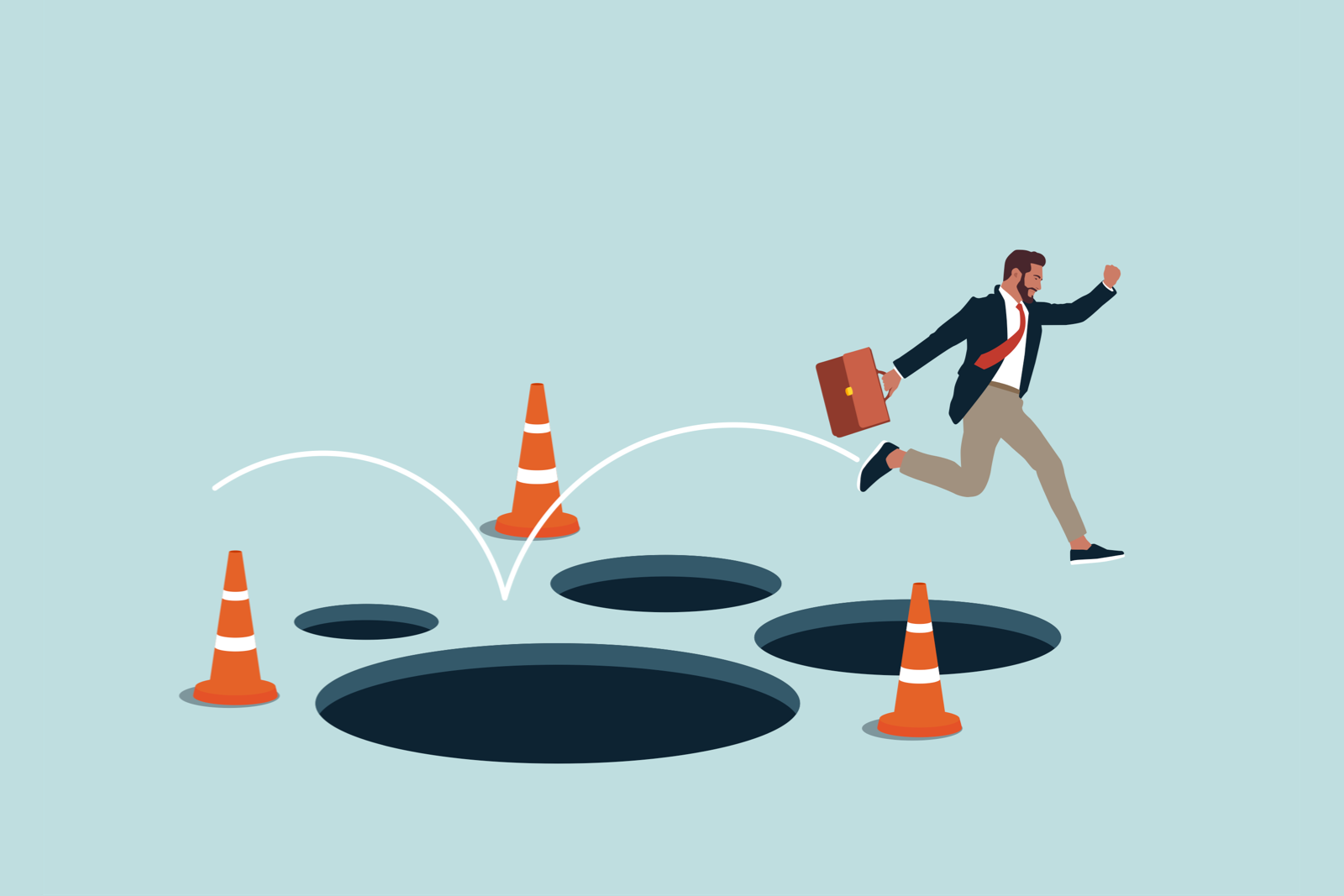Program Revamp? Preparation Maintains Member Devotion

Imagine this: After months of caffeine-fueled meetings, focus groups, and data deep dives, your team rolls out innovative changes to your loyalty program—or even a holistic program redesign. You’ve poured months of your life crafting the digital infrastructure, envisioning new perks, and maybe even inviting customers into the design process through surveys, beta tests, and more. Everyone’s buzzing with anticipation, anxious to soak in program members’ reactions.
Then your inbox fills with irate emails as customers vent their frustration, followers on social channels join in the fray, and the media runs headlines criticizing the program changes. Just when your team should be celebrating, you’re getting flak from your client’s public relations team and possibly even the CEO.
Could this situation have been avoided with a contingency plan?
Brands and emotional connections
Even the most carefully planned loyalty program changes can set in motion a tsunami of reactions. Why? Because loyalty programs aren’t just about points or perks—they’re about relationships. Members form an emotional connection with your brand through its loyalty program, so changes can feel personal. That kind of passion—that brand devotion—shows the program is working. People care! Customers grew used to the rewards, learned how to get the most out of the program, and enjoyed that free latte every 10 or so visits.
Still, resistance and negativity about what your team views as a positive evolution of your loyalty efforts can be deflating. But here’s the good news: Avoiding negative member reactions and media attention can be part of your launch plans. Preparing constructive responses that you can roll out quickly will help you preserve customer trust. The keys are preparation, communication—and just like with any relationship—empathy.
Let’s explore why programs make changes, some examples where program transformation didn’t go as well as it could have, and some strategies to help you avoid common pitfalls.
Why loyalty programs change
Loyalty programs are designed to benefit both customers and brands, but they must evolve over time to remain sustainable and effective. A brand might decide to overhaul its loyalty program or reduce specific benefits for various reasons, including:
-
Business alignment: A company might shift loyalty offerings to better fit new strategic goals. For instance, your brand may focus on attracting high-spending customers, rewarding frequent engagement rather than occasional purchases, or elevate new products or categories among your most loyal customers.
-
Competitive pressures: Perhaps a competitor just introduced a shiny new perk that’s drawing customers and media attention. To stay relevant, you need to boost your loyalty game, which might mean tweaking, or overhauling, your program.
-
Cost management: As loyalty programs increase in members, cost, and complexity, maintenance can become difficult. Adjusting your rewards structure can help keep costs in check while ensuring your program remains profitable.
-
Shifting customer behavior: Changes in customer habits, preferences, or expectations may prompt a redesign. For instance, if your customers increasingly prefer digital or experiential rewards over physical perks, you may need to revamp to offer more benefits or interactive options.
While changes are typically made with the best intentions, how those changes are communicated and perceived has a significant impact on customer loyalty. Plenty of brands have faced customer backlash after rolling out program redesigns or benefit cuts.
In 2023 Starbucks increased the number of stars required to redeem free drinks and food, sparking immediate outrage from its most loyal customers. On social media, users complained their rewards were being devalued. One angry customer posted, “Starbucks changing their rewards system yet again and requiring 200 stars for a free drink instead of 150 is making me very upset. 🙃”
In 2021 beauty brand Sephora adjusted its Beauty Insider loyalty program by modifying the free shipping benefit, causing discontent among loyal customers. Before the adjustment, the highest-tier members enjoyed free standard shipping with no minimum spend. Many members felt new minimum purchase requirements for free shipping reduced the value of their loyalty. Some aired their frustrations on social media.
Delta Air Lines restructured its SkyMiles program in 2023, making sweeping changes that impacted nearly all aspects of its loyalty program. Many frequent travelers said the changes made reaching elite status more difficult. After thousands of complaints, Delta announced improvements a month later.
Chick-fil-A’s response to backlash
Fast food chain Chick-fil-A experienced significant backlash in 2023 after making changes to its loyalty program, including increasing the number of points required to redeem certain menu items and removing other popular rewards altogether.
Members of Chick-fil-A One had grown used to the existing rewards structure, and many felt blindsided by the changes. The update was part of a trend at that time: brands adjusting loyalty programs to address rising costs, particularly due to inflation, the impact of bird flu, and other resource issues. Chick-fil-A likely aimed to offset these costs by adjusting redemption values, while also adding more menu options for each tier. These changes were in line with updates made by other major chains.
On social media, disappointed Chick-fil-A One members voiced frustrations over the point changes. Many reactions revealed an emotional connection not just to the rewards program, but also to the brand itself. The intensity of these responses underscored how deeply integrated the program was in members' routines and expectations, with the updates feeling like a personal letdown.
Chick-fil-A responded swiftly. They issued a public statement that explained the rationale behind the changes. They framed the redesign as a necessary step to ensure the program’s long-term sustainability and emphasized that the new structure would allow them to continue offering rewards to a growing customer base. Additionally, Chick-fil-A implemented temporary bonus-point promotions and personalized offers to soothe upset members.
While not all members were placated, Chick-fil-A’s proactive approach—acknowledging customer concerns, explaining reasons behind the changes, and offering compensatory benefits—helped manage the negative fallout and retain the trust of most loyal patrons.
Preparing for and managing loyalty program changes
Proper planning and proactive communication can reduce negative reactions and make responding to them faster and more effective. Companies planning to update loyalty programs should anticipate and prepare for all potential customer reactions.
Consider these strategies to mitigate negative reactions and maintain member trust:
- Engage customers early in the process.
One of the best ways to prevent backlash is to involve your most loyal members in the decision-making process. This can be done through surveys, focus groups, or beta testing new program features. Allowing members to voice opinions and provide feedback before changes go live helps brands gauge members’ potential reactions and refine their programs to better meet customer expectations. Focus groups can help you identify required changes that will upset members, allowing you to build a communication plan in advance.
- Accentuate the bright side by highlighting the value of new benefits.
Whenever possible, focus on the new or enhanced benefits that come with the redesign. While members may initially be frustrated about losing certain perks, they’re more likely to accept changes if they feel they’re gaining program benefits of equal or greater value.
For instance, if a hotel loyalty program raises redemption thresholds, it might also offer more flexible ways to earn points—e.g., through partnerships with dining or travel-related brands. Making sure the added value is easy to understand helps soften the blow of losing previous benefits.
- Prepare a strong media and PR strategy.
If backlash erupts, brands must be ready to engage with both traditional media outlets and social media platforms. A well-planned media strategy can help your brand regain control of the narrative. This might include issuing a formal statement, arranging interviews with company executives to discuss the changes, and actively responding to member concerns on social media.
Offering an empathetic tone in all communications is crucial. Acknowledge that the changes might be difficult for some members and express gratitude for their loyalty. In addition, social listening tools can help track public sentiment and guide your company’s response.
-
Offer transitional promotions or compensatory benefits.
To ease the transition, consider offering temporary promotions or compensatory benefits to members who feel disappointed by the changes. This could include bonus points, special discounts, or exclusive offers available only to members during the adjustment period. If the changes prove too disruptive, brands might consider reintroducing some previous benefits or tweaking the program based on customer feedback.
-
Monitor and adapt.
Once the new program is in place, it’s essential to monitor member feedback and adjust if necessary. Loyalty programs should be agile—ready to evolve based on customer needs and business objectives. Regularly gathering feedback and staying in tune with member satisfaction will help companies stay ahead of potential issues and maintain strong loyalty.
Change is inevitable, in life and in loyalty. Staying proactive, transparent, nimble, and empathetic will help your brand navigate the tricky terrain of program overhauls while maintaining trust with brand devotees. After all, loyalty is a two-way street, and when brands show they’re listening, customers are much more likely to stick around—even when the free lattes are a little harder to earn.
Chris Felton is senior director, Strategic Services, for The Lacek Group. For more than 30 years, The Lacek Group has been perfecting the art and algorithms of brand devotion. We help world-class brands identify their highest-potential customers, engage them across channels throughout their lifecycles, personalize each relationship for optimal long-term results, and measure the true effectiveness of those efforts. The Lacek Group is an Ogilvy One company.

